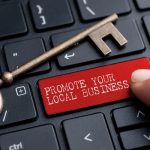Painting a room sounds simple. But the moment you think about picking up a brush, your mind jumps to questions. How much paint do I need? What tools should I use? Most of all— How Much Does a Handyman Charge to Paint a Room?
Many homeowners face this. You desire a clean and comfortable space without going over budget. Hiring a handyman feels like a smart middle ground. It’s often more affordable than a painting company, and you still get solid results. Still, understanding the cost is key.
Let’s discuss what goes into a handyman’s price for painting a room. We’ll also discuss the cost, what to expect, and how to get the best deal.
Have you ever stood in a room with chipped walls or faded colors? If so, you might have found yourself wondering what it takes to refresh the space. Therefore, this guide is for you. We’ll help you understand every angle. For instance, we’ll cover price per square foot, paint quality, and even hidden charges you should ask about.
Ultimately, you’ll feel confident knowing what to expect, what to ask, and what to avoid. Let’s jump in.
1. Understanding the Basics: What’s in the Price?
When you ask, “How much does a handyman charge to paint a room?” the answer isn’t always straightforward. But don’t worry—we’ll break it down.
A handyman usually charges by:
- The size of the room
- The condition of the walls
- The number of coats needed
- The type of paint used
You might pay:
- $200 to $500 for a standard room (10×12 feet)
- $2 to $6 per square foot
- $20 to $40 per hour
Those are average numbers. They can shift based on your location and the job’s complexity.
“A fresh coat of paint can boost your home’s value and mood.”
Handymen offer lower rates than professional painters. That’s positive news, especially if you’re refreshing one or two rooms. But lower prices don’t always mean fewer skills. Many handymen have years of experience in interior painting.
When requesting quotes, please ensure you obtain all the necessary details. What’s included? Does it cover prep work, primer, and cleanup? Knowing the amount helps you avoid surprise costs.
Furthermore, ask if the handyman has insurance. A reputable handyman should always be able to provide proof of coverage in case something goes wrong.
Ask about timing, too. Can they finish in one day? Will it take two? Establishing clear expectations from the beginning helps minimize miscommunication later.
2. Room Size and Layout: It Matters More Than You Think
The first thing a handyman will consider is the room’s size. That’s because larger rooms take more time and materials.
A small bedroom may cost around $200. A bigger room—like a living room or open dining space—might cost $500 or more. However, size isn’t the only factor to consider when determining cost.
Ceiling height matters, as do tricky corners, wall damage, and windows. Therefore, more details mean more effort, which can raise the cost.
Let’s break it down:
Room Type Average Cost
| Room Type | Average Cost |
| Small Bedroom | $200–$300 |
| Master Bedroom | $300–$500 |
| Living Room | $400–$600 |
| Kitchen | $250–$400 |
| Bathroom | $150–$250 |
Rooms with lots of trim, doors, or built-ins can also take longer to paint. This affects both time and labor costs.
“Every room is unique. So is the cost to paint it.”
So, take a few measurements. These measurements will help you compare estimates more clearly. Always provide a detailed description of the room when obtaining quotes.
Another helpful tip is to take pictures of the room and share them with the handyman. Visuals give better insight than words alone.
Furthermore, talk about furniture. Will they move it? Will you? Clearing space ahead of time can lower the cost. Time saved is money saved.
3. Paint Type and Quality: Budget vs. Premium
Paint can seem cheap until you start using up gallons. A handyperson will usually ask what kind of paint you prefer.
Basic latex paint may cost around $20 per gallon. Moreover, premium options can go up to $60 or more. But higher quality means better coverage and fewer coats.
Here’s a brief look:
- Basic Paint: $20–$30/gallon
- Mid-Range: $35–$50/gallon
- High-End: $50–$70/gallon
Paint finish also plays a role:
- Flat or matte: Best for ceilings, low-traffic rooms
- Eggshell or satin: Popular for walls; easy to clean
- Semi-gloss or gloss: Used for trim, bathrooms, kitchens
“Better paint can save money in the long run.”
Some handymen include paint in the quote. Others expect you to buy it. So, always ask.
If you’re on a tight budget, before getting a detailed answer to how much does a handyman charge to paint a room? ask about one-coat paints. They cost more upfront but may cut labor time.
And please keep in mind the primer. Some paints include it; others don’t. Meanwhile, a separate primer adds time and cost.
Color also matters. Dark colors may need more coats, and bright colors can be harder to cover. Keep that in mind when choosing.
4. Prep Work and Repairs: The Hidden Time Factor
Painting isn’t just slapping color on walls. Prep work is key.
That might include:
- Moving furniture
- Taping edges
- Repairing nail holes
- Patching cracks
- Sanding rough spots
These steps take time. Expect additional charges if your walls sustain damage.
For example:
- Minor patching: May be included in the base price
- Major repair work: Could add $50–$150 depending on the job
Handymen often charge hourly for these extras. If your walls are in good shape, you’ll save money. If not, it’s still worth fixing. Otherwise, the paint won’t last.
“Good prep leads to a better finish—and longer-lasting results.”
Discuss repairs up front. Because some handymen are skilled in drywall fixes, others might refer you elsewhere. So, knowing ahead helps you plan.
Prep also includes cleaning. Dusty or greasy walls need washing before paint sticks. Some handymen include this; others don’t.
The more you prepare yourself, the more you save.
5. How Long Does It Take to Paint a Room?
Time is money. That’s why it helps to understand how long a paint job takes.
A typical 10×12 room takes:
- 4–6 hours for one coat
- 6–10 hours for two coats (including drying time)
Are you considering adding ceiling or trim work? That could add 2–4 more hours.
Here’s a rough timeline:
| Task | Time Estimate |
| Prep Work | 1–2 hours |
| First Coat | 2–3 hours |
| Drying Time | 1–2 hours |
| Second Coat | 2–3 hours |
| Touch-Ups & Cleanup | 1 hour |
“Fast work isn’t always good. And good work isn’t always fast.”
While some handymen charge flat rates, others bill on an hourly basis. Understanding the time breakdown helps you understand what you’re paying for.
Furthermore, weather and humidity levels can impact drying times, especially when painting during the colder months or in areas with poor ventilation.
If you have a deadline, such as moving in or preparing for guests, please discuss your schedule with your handyman in advance along with this question how much does a handyman charge to paint a room? Your handyman may be able to bring extra help or work in shifts to speed up the job.
Could you please inquire about their plan for organizing the tasks when working on multiple rooms? Efficient scheduling could help you save both time and money.
6. Regional Differences in Handyman Rates
Where you live matters. A lot.
In cities with high living expenses, handyman rates tend to be higher. In rural or suburban areas, they’re often lower.
For example:
- New York or San Francisco: $40–$60 per hour
- Midwest cities: $25–$35 per hour
- Rural areas: $20–$30 per hour
Furthermore, the demand for services affects pricing. During spring and summer, handymen stay busy. That may raise prices or lengthen wait times.
“Rates change by zip code. Always get local quotes.”
Another tip? Check your neighborhood groups online. Therefore, sites like Nextdoor or Facebook groups often list local pros, reviews, and deals.
Remember to check with family, friends, or neighbors. Occasionally, the best handymen are found through word of mouth.
Furthermore, building policies may affect access or scheduling if you live in a condo or apartment. Always check in advance.
7. Should You DIY or Hire a Handyman?
Painting sounds easy, right? But it adds up once you buy the paint, brushes, trays, drop cloths, tape, and ladders.
DIY pros:
- Lower upfront cost
- You control every detail
- It feels satisfying to do it yourself
DIY cons:
- Takes time
- Mistakes are common
- Cleanup can be a headache
Hiring a handyman gives you the following:
- A faster, cleaner job
- Fewer mistakes
- Less stress
“Your time is worth something. So is peace of mind.”
DIY might make sense if you’re painting a single wall or doing touch-ups. But a handyman is often worth it for full rooms or tricky areas.
Don’t forget safety. If your ceiling is high or the space needs scaffolding, leaving it to a pro is safer.
8. Smart Tips to Get the Best Value
Want to save money and still get great results? Try these tips:
- Get 3–5 quotes: Compare prices, but also experience
- Ask about materials: Know what’s included
- Choose neutral colors. They often need fewer coats
- Prep the space yourself: Move furniture and cover items
- Use leftover paint: Ask if you can reuse what’s in the garage
- Paint multiple rooms at once: It may lower the cost per room
“Saving money doesn’t mean cutting corners. It means planning wisely.”
Furthermore, ask about referrals or reviews. A trustworthy handyman has happy customers. And check if they’re insured—just in case.
Schedule smart. Book during off-peak seasons. Winter is slower for most handymen, so you might score a deal.
Ask about combo packages. Some handymen offer discounts if you need painting and other minor repairs simultaneously.
Lastly, communicate. A detailed discussion upfront avoids surprises later. Be clear about what you want and what your expectations are.
Using the tips above, you’ll know what to ask, what to avoid, and how to make wise choices. So go ahead. Pick your color. Find your handyman. And start turning your walls into something fresh and beautiful. Because sometimes, a new coat of paint is all it takes to fall in love with your home again.
9. What Tools and Materials Are Included in the Cost?
It’s crucial to understand what the quote includes when hiring a handyman. Occasionally, if you ask how much does a handyman charge to paint a room? the price covers only labor; other times, it contains tools and basic supplies.
Here are some materials that might be included:
- Drop cloths and painter’s tape
- Paint rollers and brushes
- Ladders and extension poles
- Sandpaper and putty for prep
- Cleanup supplies like rags and buckets
“The right tools make all the difference.”
Ask your handyman if you need to supply anything. If they bring everything, the convenience may justify a slightly higher price.
Furthermore, keep in mind that professional tools can create a better finish. For example, a high-quality roller can produce fewer streaks and smoother coats.
If you have a preference for a specific brand of paint or supplies, please communicate that at the outset. The handyman may charge differently depending on your preferences.
10. Painting Accent Walls or Feature Walls: Is It Extra?
Accent walls are trendy. But they may cost more.
Why? Painting a feature wall often requires the following:
- Special colors that may need more coats
- Sharp edge work and extra taping
- Precision to create clean lines and patterns
The job becomes more detailed and time-consuming if your accent wall has texture or built-in designs.
Expect to pay an additional $50 to $150, depending on the wall’s size and complexity.
Here’s a quick breakdown:
| Feature Type | Added Cost Estimate |
| Solid Accent Color | $50–$75 |
| Geometric Designs | $75–$150 |
| Textured Surfaces | $100–$200 |
“A pop of color is fun—but precision takes time.”
Ask your handyman if they have experience with patterns, stencils, or murals. Not every painter is skilled in this area.
11. How to Maintain Your Painted Walls for Longer Life
After your room is painted, you want that fresh look to last. Here’s how to make it happen:
- Dust walls regularly: Use a soft cloth or vacuum with a brush attachment
- Wipe down smudges: A damp sponge or mild soap works well for most paints
- Avoid harsh chemicals: They can strip paint and dull the finish
- Repair chips promptly. Keep a small jar of leftover paint for quick fixes
“Care today saves repainting tomorrow.”
It is advisable to use washable paints in high-traffic areas, such as hallways, kitchens, or kids’ rooms. These not only resist stains, but they are also easier to clean.
To avoid scuff marks, place furniture slightly away from walls. Additionally, encourage gentle play indoors to prevent dents or dings.
In fact, maintaining your walls doesn’t take long at all. With just a little effort, you can help your paint job stay beautiful for a longer time.
12. Questions to Ask Before Hiring a Handyman
Not all handymen are the same. To make sure you’re getting the right person for the job, ask these questions:
- How many years have you been painting?
- Do you charge hourly or by the job?
- What’s included in your quote?
- Do you provide the paint and supplies?
- Are you licensed and insured?
- How long will the job take?
- Do you clean up afterward?
- Can I see photos of past work?
- Do you have customer reviews or references?
- What happens if I’m not satisfied with the results?
“The right questions lead to the right results.”
Asking these ahead of time gives you confidence. It also shows the handyman you’re prepared and serious about quality work.
Don’t rush the decision. Because a little extra time upfront leads to better results—and fewer surprises.
Brush Up Your Budget, Brighten Your Home!
Whether you’re updating a bedroom or refreshing your living space, knowing how much a handyman charges to paint a room puts the power in your hands. Every decision—from paint type to prep work—affects the cost. Moreover, using the tips above, you’ll know what to ask, what to avoid, and how to make wise choices. So go ahead. Pick your color. Then find your handyman. And start turning your walls into something fresh and beautiful. Because sometimes, a new coat of paint is all it takes to fall in love with your home again.

















Leave a comment